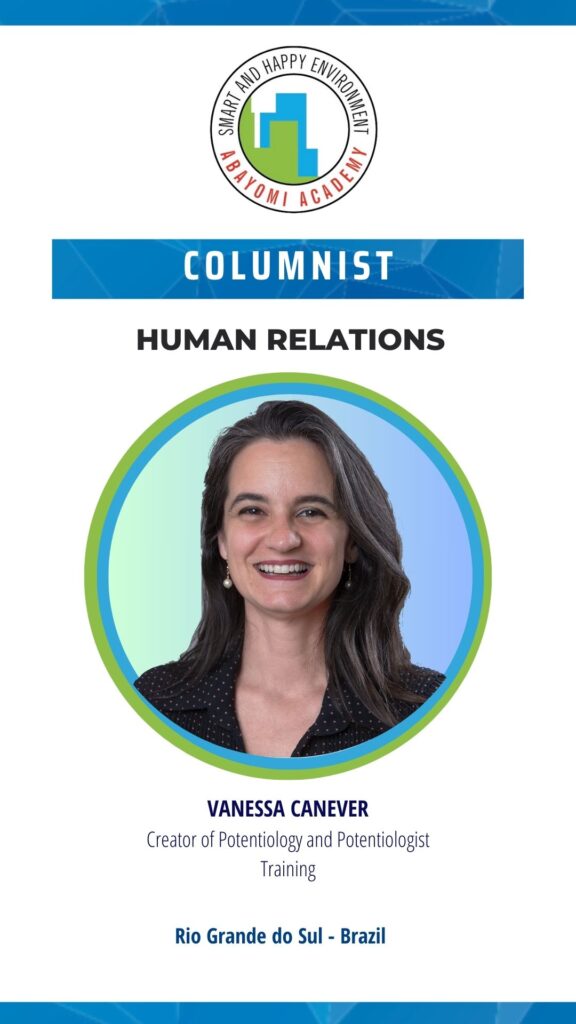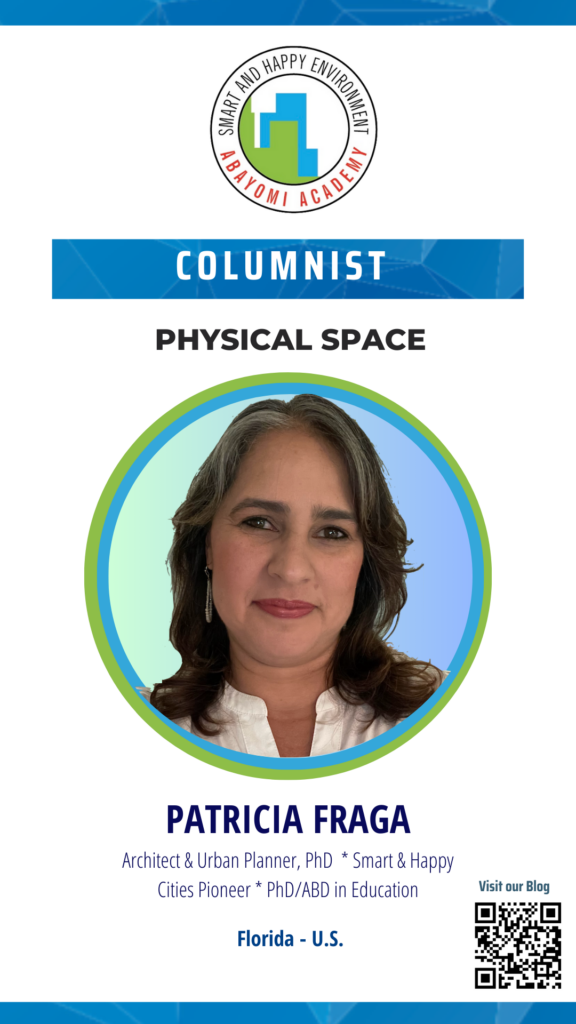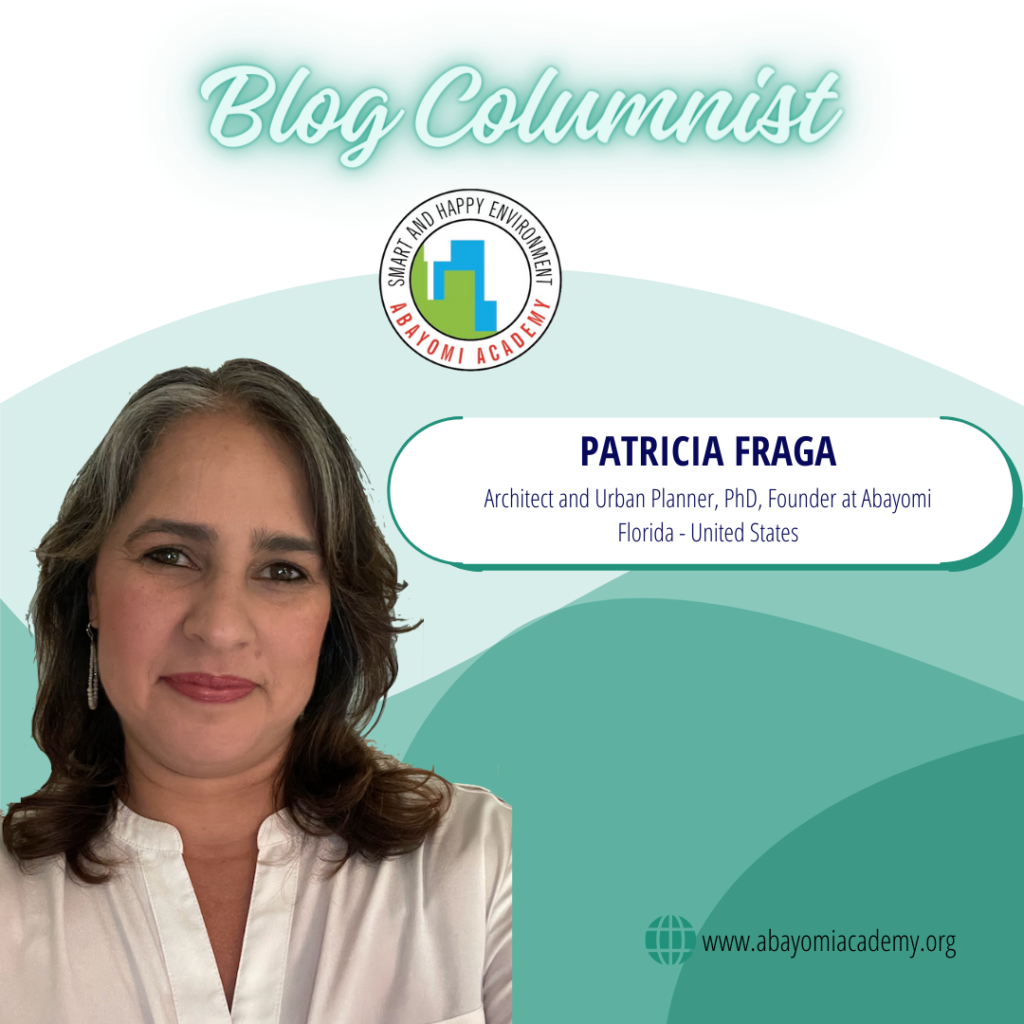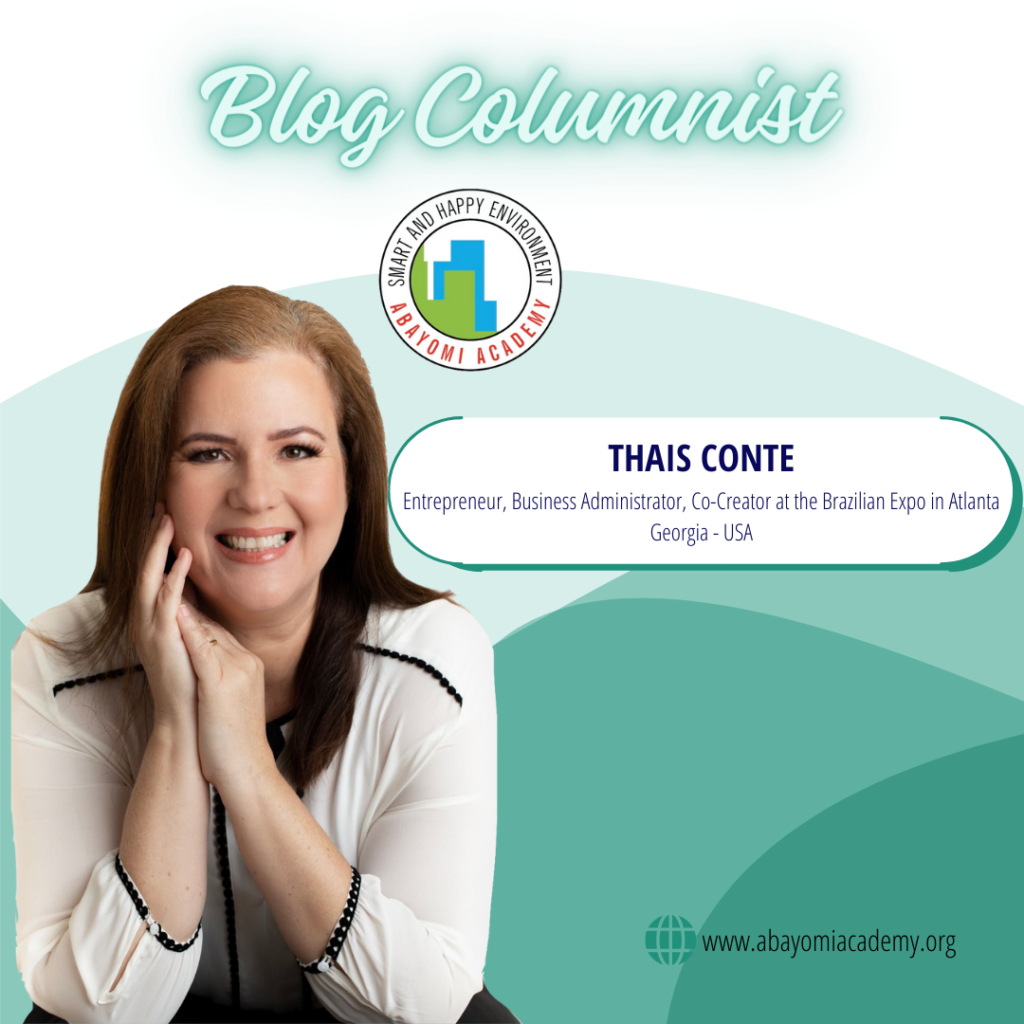There is something profoundly human in the desire to see others thrive. Whether leading a team, guiding a family, or contributing to a community, we are constantly placed in positions of influence — and perhaps of awakening — the hidden potential of those around us. This is no simple task. It requires presence, discernment, and the courage to believe in what is not yet visible.
As leaders and parents, we hold fundamental roles in the architecture of human development. We are not merely managers of behavior or providers of needs; we are facilitators of transformation, and on this path, we are also called to grow.
Recognizing Potential: Beyond Performance and Behavior
Many of us were taught to equate potential with performance. When someone achieves good results, we celebrate their talent. When someone struggles, we often assume they lack ability. But human potential is not performance — it is possibility. It is that silent, often unnoticed spark that lives in every person, waiting for the right conditions to ignite.
Recognizing it requires a shift in perspective. It means looking beyond visible behavior and asking deeper questions: What’s behind this reaction? What strength is being suppressed by fear, trauma, or lack of opportunity? What dream was silenced before it could be born?
In this sense, both leadership and parenting become acts of deep listening — not only to what is said, but also to what has not yet been expressed.
The Power of Belief: How Expectation Shapes Reality
The work of Carol Dweck on growth mindset and Bruce Lipton’s Biology of Belief show us that belief holds power. When someone believes in us, our capacity to achieve expands. The opposite is also true: when we are doubted by those in positions of leadership, we begin to doubt ourselves.
This means our expectations are not neutral. They are self-fulfilling prophecies. A parent who repeatedly tells a child they are “lazy” is not merely making an observation — they are casting a role. A manager who assumes a team member “lacks leadership potential” may never give them a chance to prove otherwise.
We must ask ourselves: What are we projecting onto the people we guide or educate? Are we making space to be surprised? Are we willing to be wrong about them — in the best possible way?
Creating Environments of Psychological Safety
Potential does not flourish in environments of fear or excessive control. It thrives in spaces of safety, curiosity, and trust. People perform better when they are not afraid to make mistakes, ask questions, or show vulnerability.
This is especially true in parenting. A child who fears punishment may hide their mistakes — and with them, their learning. Likewise, in the workplace, someone who feels judged may withdraw, keep ideas to themselves, and avoid risks.
We need to build environments where people feel safe to experiment, fail, and grow. This does not mean an absence of boundaries or standards. It means that expectations are paired with empathy. That feedback is delivered with respect. That correction is always in service of development — not domination.
From Authority to Partnership
True leadership — whether in a company or a home — is not about power over others. It is about power with others. About cultivating autonomy rather than dependence. Inspiration rather than fear. Responsibility rather than blind obedience.
This shift requires a change in mindset: from control to partnership. Instead of asking “How do I get them to do what I want?”, we begin to ask, “How can I help them become better than they imagine they can be?”
This transformation is profound. It changes how we speak, how we listen, how we set boundaries, and how we praise. It changes everything — because it is rooted in respect for each person’s uniqueness and a commitment to their long-term flourishing.
Practical Tips for Awakening Potential
Whether you are leading a team or raising a child, simple and consistent actions can make a great difference:
- Increase self-awareness
Help people observe themselves more deeply. Encourage them to reflect on their preferences, motivations, talents, and challenges. Sincere, curious questions are a great place to start. - Make everyone aware of each other’s strengths
When a team or family knows what each person is good at, opportunities for collaboration, mutual appreciation, and collective growth increase. - Give intentional recognition and praise
Honest and specific compliments fuel development. Say what you saw, why it mattered, and how it made a difference. Recognition boosts self-esteem and engagement. - Encourage applying strengths in new contexts
Help people see that what they do well in one area can be useful in another. An organized child might use that skill to lead a school project. A communicative colleague can contribute to trainings, meetings, or events. - Use strengths to develop areas for growth
Connecting skills is powerful. Someone who is creative can use that creativity to solve technical problems in new ways. A person with empathy can improve their negotiation skills. Strengths are allies in the evolution process. - Encourage experiences beyond the norm
At home, this might mean exploring art, sports, emotional intelligence, or volunteer projects. At work, it could include job rotation, temporary challenges, or involvement in cross-functional initiatives. Diverse experiences broaden perspectives and build adaptability. - Encourage a Broader Perspective (Shifting from Self-Centeredness)
Fostering genuine interest in the common good helps develop empathy, collective responsibility, and a collaborative spirit. Invite reflections and actions that involve caring for others, contributing to the group, understanding different perspectives, and acting with generosity. An environment where everyone feels part of and responsible for the whole enhances both individual and collective growth.
Conclusion: The Shared Work of Becoming
Awakening potential is not a technique. It is a posture. A way of being in the world. A commitment to what is not yet — but can be. It may be one of the most precious responsibilities we can take on — as parents, leaders, educators, or simply as human beings walking alongside other human beings.
In a world that often prioritizes speed, performance, and results, this kind of presence is both revolutionary and urgently needed.
We do not need to be perfect to do this work. But we must be willing to see, to listen, to believe, and to grow. Because in the end, every act of awakening someone else’s potential is also an invitation to awaken our own.

Creator of Potentiology and Potentiologist Training. Master’s Degree in Education. Postgraduate in people management, business pedagogy, group dynamics, and distance learning. Specialist in Emotional Intelligence and agile methods. Works with human potential and the development of people so that they can achieve better results, in the shortest possible time, and in a light way.
]]>A Story Bigger Than Sports
I originally had a different topic in mind for this month’s post here on the Abayomi Academy blog. But after what happened last week in Gainesville — and how it echoed across other states and institutions in the U.S. — I had to change direction.
Because this story isn’t just about a basketball game.
It’s about collective happiness, belonging, and community vitality — essential pillars for building smart, human-centered environments.
So What Does a College Team’s Victory Have to Do with All This?
Much more than you might think.
When a City, a State, and Institutions Unite
The Florida Gators’ basketball championship win didn’t just move Gainesville — it mobilized the entire state of Florida and involved institutions from across the country.
I experienced it through my daughter, who studies at UF, and through friends — and even though I don’t live there, I could feel the vibrant, contagious energy that spread through the community.
- Exactech Arena reached and surpassed full capacity, setting a new attendance record of 11,355 people.
- After the tight 65–63 victory over the Houston Cougars, thousands of fans flooded the streets — especially University Avenue — in a spontaneous celebration that lasted for hours.
- A day later, UF organized an official rally at Flavet Field, where thousands welcomed the champions with enthusiasm and pride.

Community Vitality: What’s Behind All This?
What stands out isn’t just the title or the trophy.
It’s the culture in the U.S. of valuing, recognizing, and celebrating institutions, players, students, and communities.
This collective mobilization goes far beyond a final score. It reveals the power of sports, arts, and cultural initiatives in building belonging and strengthening social connections.
In the U.S., sports and cultural activities are vital paths for youth development — opening doors to universities, scholarships, and careers. But above all, they are powerful identity builders and community enhancers.
The Impact Goes Far Beyond the Court
The ripple effects of this victory were felt everywhere:
 Merchandise sales skyrocketed.
Merchandise sales skyrocketed. Players received amazing professional offers.
Players received amazing professional offers. UF gained nationwide attention.
UF gained nationwide attention. Newspaper and magazine covers turned into collectibles.
Newspaper and magazine covers turned into collectibles. Alumni associations — already strong — deepened their ties with more donations, mentorship programs, and institutional support.
Alumni associations — already strong — deepened their ties with more donations, mentorship programs, and institutional support.
And this isn’t just a reaction to the victory — it’s a deep-rooted cultural habit of investing in community resilience and vitality.
And It Doesn’t Stop There — the Whole Society Benefits
Events like this fuel local and regional economies:
- Create temporary and permanent jobs
- Boost retail, restaurant, tourism, and service sectors
- Open doors for new businesses and partnerships
- Inspire entrepreneurs and innovators to create products and services related to sports, leisure, and entertainment
This is community vitality in motion.
When a community thrives together, everyone wins.
What Can This Teach Us?
That collective celebration shouldn’t be reserved for the World Cup, the Super Bowl, or national championships.
Our children, youth, and communities deserve to be celebrated long before they reach national platforms. Their local, school, and community victories should be sources of pride, joy, and recognition.
This builds a sense of belonging, nurtures talent, creates social bonds, and emotionally prepares people — not only to win, but also to deal with losses, develop resilience, and strengthen emotional intelligence.
For Smarter, Happier, and More Human-Centered Environments
If we want truly smart and happy environments — whether in companies, schools, neighborhoods, or cities — we need to learn from this model:
 Value sports, arts, and culture as essential for personal and social development
Value sports, arts, and culture as essential for personal and social development
 Create platforms for local visibility and recognition
Create platforms for local visibility and recognition
 Celebrate every community achievement — big or small
Celebrate every community achievement — big or small
 Strengthen emotional, institutional, and economic networks, involving alumni, families, and partners
Strengthen emotional, institutional, and economic networks, involving alumni, families, and partners
 Encourage local entrepreneurship that grows alongside these celebrations
Encourage local entrepreneurship that grows alongside these celebrations
The Abayomi Way
At Abayomi Academy, we believe that we can only be fully happy as a community.
Smart and happy environments are those that generate continuous community vitality, celebrate their people, thrive together, and recover together.
And it all begins with small local victories — that eventually become something far greater.
 Share this story — and let’s celebrate together!
Share this story — and let’s celebrate together!

Patrícia Fraga, a visionary and dynamic professional, holds a Ph.D. in Architecture, blending her passions for sustainable urbanism, education, and technology. With a multifaceted career spanning engineering, construction, and academia, she is the Founder of Abayomi and the Executive Director of Abayomi Academy. Patrícia’s global influence extends through her roles as an international speaker, published author, and advocate for Smart & Happy Environments. Her commitment to cultural inclusion shapes transformative projects worldwide, emphasizing the integration of technology with environmental responsibility. A mother of five, Patrícia’s journey reflects resilience, innovation, and dedication to creating positive, sustainable, and joyful living spaces worldwide.
Get to know more about her: Facebook Instagram Youtube Linked In
]]> If there’s one thing that defines Daiana Arnold, it’s her passion for life and her daily choice to be happy! Her mission? To transform lives through the design of memorable experiences, combining ambiance and behavior to help people live more lightly and meaningfully.
If there’s one thing that defines Daiana Arnold, it’s her passion for life and her daily choice to be happy! Her mission? To transform lives through the design of memorable experiences, combining ambiance and behavior to help people live more lightly and meaningfully.
 Have you ever imagined a design project that goes beyond aesthetics? Daiana creates unforgettable moments! Like the time she delivered an apartment to a family, welcoming them with their favorite snack, popcorn, and thoughtful details that sparked emotions, turning that night into a cherished memory. For her, design isn’t just about creating spaces—it’s about crafting experiences that touch the heart!
Have you ever imagined a design project that goes beyond aesthetics? Daiana creates unforgettable moments! Like the time she delivered an apartment to a family, welcoming them with their favorite snack, popcorn, and thoughtful details that sparked emotions, turning that night into a cherished memory. For her, design isn’t just about creating spaces—it’s about crafting experiences that touch the heart!
 And when it comes to brands? She develops unique storytelling, forging deep connections between businesses and their audience. Her work strengthens the sense of belonging, creating emotional bonds and transforming customers into true brand advocates. After all, “Everything the heart feels, the brain never forgets!”
And when it comes to brands? She develops unique storytelling, forging deep connections between businesses and their audience. Her work strengthens the sense of belonging, creating emotional bonds and transforming customers into true brand advocates. After all, “Everything the heart feels, the brain never forgets!”
 Beyond design, Daiana is a natural leader! With hospitality, communication, and networking, she helps families develop an entrepreneurial mindset, believing that finding purpose boosts self-confidence, fulfillment, and well-being.
Beyond design, Daiana is a natural leader! With hospitality, communication, and networking, she helps families develop an entrepreneurial mindset, believing that finding purpose boosts self-confidence, fulfillment, and well-being.
 And you—what kind of impact are you leaving behind? In 2025, Daiana Arnold will be writing in Portuguese for the Abayomi Academy Blog, sharing her insights in the Design of Experiences Column. Get ready to be inspired and transform the way you see environments and human connections!
And you—what kind of impact are you leaving behind? In 2025, Daiana Arnold will be writing in Portuguese for the Abayomi Academy Blog, sharing her insights in the Design of Experiences Column. Get ready to be inspired and transform the way you see environments and human connections!
#abayomiacademy #blog2025 #experientialdesign #memorableexperiences #hospitality #networking #environmentaldesign #storytelling #experiencecreation #entrepreneurship #leadership #DaianaArnold
]]>We live in a fast-paced society marked by rising rates of suicide, depression, burnout, anxiety, and other mental health challenges. Globally, over 300 million people of all ages suffer from depression. According to the World Health Organization (WHO), Brazil ranks second in the Americas and fifth worldwide for anxiety disorders. It also has the highest depression prevalence in Latin America. Approximately 30% of Brazilian workers experience burnout symptoms—a state of physical and mental exhaustion linked to work—as reported by the National Association of Occupational Medicine (Anamt). Studies suggest that 70% of employees worldwide have faced burnout at some point in their careers.
The first step to addressing any problem is recognition. However, the insidious nature of work-related mental disorders complicates this process. Symptoms often emerge subtly, masquerading as temporary fatigue or discouragement.
Key indicators of compromised mental health include:
- Persistent fatigue unrelieved by rest
- Difficulty disconnecting from work, even during time off or vacations
- Sleep disturbances (insomnia or excessive drowsiness)
- Increased irritability or disproportionate emotional reactions
- Loss of interest in previously enjoyable activities
- Recurrent physical issues, such as headaches, digestive problems, frequent colds, or muscle tension
- Feelings of inadequacy, despite objective success
- Social withdrawal from colleagues and family
- Impaired concentration and memory
These symptoms are frequently rationalized: “It’s just a phase,” “I’ll recover after vacation,” or “I didn’t sleep well.” Such justifications delay seeking help. The critical distinction lies in whether these experiences are occasional or recurring.
At Potenciologia, we emphasize recognizing and cultivating internal strengths to rebuild mental resilience. During crises, individuals often fixate on weaknesses, overlooking the resilience they’ve demonstrated in past challenges:
1. Reconnecting with resilience narratives
Reflect on past challenges you’ve overcome. These memories reactivate internal resources and reinforce self-efficacy.
2. Mapping strengths and skills
Identify core competencies and adapt them to current challenges. Skills that succeed in one context often hold solutions for new obstacles.
3. Reframing experiences
Shift narratives from “I’m suffering” to “I’m growing.” Interpretation shapes emotional responses.
Beyond symptom management, addressing root causes is vital. Burnout or anxiety often masks deeper issues. For instance:
- A professional fearing layoffs may unconsciously provoke family conflicts to release tension.
- Someone feeling career stagnation might project frustration onto colleagues through chronic impatience.
Understanding these patterns involves:
- Identifying unspoken expectations (e.g., unrecognized achievements).
- Acknowledging fears (e.g., fear of failure or replacement).
- Recognizing behavioral cycles and their true motivations.
Given this context, what practical steps can we take to preserve and strengthen mental health in the workplace? Potenciologia suggests focusing on three aspects: thoughts, emotions, and actions, to assess whether they are positive or negative, and provides specific tips:
For Individuals:
- Practice Conscious Self-Observation
Establish regular “check-ins,” identifying early signs of negative thoughts, exhaustion, anxiety, or any distressing emotion before they become problematic. - Set Clear Boundaries
Define healthy limits between work and personal life, including digital disconnection times and moments for energy restoration. - Cultivate Supportive Relationships
Develop a support network in both professional and personal environments, with people who can share challenges and provide honest, growth-oriented feedback. - Seek Professional Help
Recognizing that seeking professional support is not a sign of weakness but rather of emotional intelligence and responsible self-care.
For Leaders:
- Encourage a trust-based environment – Be accessible and show empathy when listening to employees’ concerns.
- Practice open communication – Establish regular check-ins to understand the team’s well-being.
- Manage expectations realistically – Avoid overburdening staff, delegate tasks fairly, and adjust demands as needed.
- Model self-care – Demonstrate the importance of balance by taking breaks and respecting rest periods.
- Educate themselves on mental health – Seek training and information to recognize burnout signs and support the team effectively.
For Organizations:
- Create Safe Spaces – Establish anonymous channels or support groups where employees can express difficulties without fear.
- Review Work Policies – Evaluate workload, goals, and deadlines to ensure they are sustainable and do not promote excessive stress.
- Offer Structured Support – Implement wellness programs, psychological assistance, and emotional management training.
- Foster a Culture of Respect – Raise awareness at all levels of the company about the importance of mental health.
At Potenciologia, we have a Potentialities Program that maps employees’ potential and satisfaction in performing their tasks, anticipating possible mental health issues, helping in work organization, and fostering personal development based on their strengths.
The increase in work-related mental health issues is a complex challenge that requires both individual and collective attention. We believe that the ultimate goal is not just to avoid burnout or manage anxiety but to create conditions for each person to fully express their unique potential, finding meaning and fulfillment in their professional journey.

Creator of Potentiology and Potentiologist Training. Master’s Degree in Education. Postgraduate in people management, business pedagogy, group dynamics, and distance learning. Specialist in Emotional Intelligence and agile methods. Works with human potential and the development of people so that they can achieve better results, in the shortest possible time, and in a light way.
]]> Vanessa Canever is a specialist in human development and potential, the creator of Potenciology and the Potenciologist Training Program. With a career dedicated to personal and professional growth, she helps individuals achieve better results in less time—while keeping the process light and enjoyable.
Vanessa Canever is a specialist in human development and potential, the creator of Potenciology and the Potenciologist Training Program. With a career dedicated to personal and professional growth, she helps individuals achieve better results in less time—while keeping the process light and enjoyable.
 A Master in Education, Vanessa has a strong academic background, with postgraduate studies in People Management, Corporate Pedagogy, Group Dynamics, and Distance Learning. She is also a specialist in Emotional Intelligence and Agile Methods, combining technical expertise with sensitivity to transform lives and careers.
A Master in Education, Vanessa has a strong academic background, with postgraduate studies in People Management, Corporate Pedagogy, Group Dynamics, and Distance Learning. She is also a specialist in Emotional Intelligence and Agile Methods, combining technical expertise with sensitivity to transform lives and careers.
 Her innovative approach blends science, strategy, and human development, enabling individuals and organizations to maximize their potential efficiently and sustainably.
Her innovative approach blends science, strategy, and human development, enabling individuals and organizations to maximize their potential efficiently and sustainably.
 In 2025, Vanessa will bring her expertise to the Abayomi Academy Blog, writing in Portuguese for the Human Development column. Her articles will explore pathways to personal and professional growth, covering topics such as emotional intelligence, performance, and innovation in people management.
In 2025, Vanessa will bring her expertise to the Abayomi Academy Blog, writing in Portuguese for the Human Development column. Her articles will explore pathways to personal and professional growth, covering topics such as emotional intelligence, performance, and innovation in people management.
Stay tuned and get ready to be inspired!
#abayomiacademy #blog2025 #smartandhappyenvironments #abayomimethodology #smartcities #happycities #smartandhappycitizens #VanessaCanever #Potenciology #HumanDevelopment #EmotionalIntelligence #AgileMethods
]]>Throughout our journey to create smarter and happier environments, we’ve explored several essential aspects: from balancing technology with happiness, the importance of self-awareness and situational consciousness, to organizing our physical and digital spaces, and the impact of intelligent communication. Now, we’ve arrived at a crucial point: human relationships.
Human relationships are the foundation of community vitality, one of the most important elements for the happiness and prosperity of any group. In this sixth pillar of our journey, we will focus on how to strengthen these connections, promoting an environment of harmony, respect, and collaboration. Together, we will explore strategies to cultivate mutual understanding, which is essential for creating spaces where well-being and happiness can flourish.
Why Are Human Relationships So Important?
Imagine your daily life without the support, care, and interaction of the people around you. Healthy human relationships bring vitality to our spaces, transforming them into environments of collaboration and growth. When relationships are healthy, everyone thrives, and happiness becomes a collective experience.
The Abayomi Methodology teaches us that developing good human relationships is essential for creating environments that promote well-being and success. Empathy and mutual understanding are the pillars that support this foundation. Let’s reflect on how these connections affect our daily lives and how we can make them even stronger.
Practical Activity: Increasing Harmony in Your Spaces
Reflecting on Your Connections:
Think about the environments where you spend most of your time: your home, your workplace, with friends, and neighbors. Who are the people you interact with? How do you feel about them? What are the strengths of these relationships? Are there small frictions that could be smoothed out? Write down the positive aspects and potentialities you observe in these relationships in your “My Journey to Happiness” notebook.
Enhancing Good Relationships:
Now, think about how you can strengthen these connections. It could be by practicing active listening, showing empathy, or even creating opportunities for enjoyable moments together. Remember, every small gesture counts toward building a more harmonious environment.
Resolving Challenges Constructively:
Conflicts are inevitable in any environment, but have you ever considered the causes of these disagreements? Could something in the physical environment, like furniture, acoustics, lighting, or another aspect of comfort, be amplifying or even causing these conflicts?
Where there are conflicts, reflect on how the surrounding space may be contributing to the tension. Consider how you can approach these challenges positively. Instead of focusing solely on the problem, seek solutions that benefit everyone. This might mean listening more, being more flexible, or simply creating space for honest and constructive dialogue. By doing so, you are creating a more harmonious environment that fosters collaboration.
Strengthening Community Vitality:
Community vitality is the lifeblood of a group, that pulsating energy that arises when everyone feels connected, valued, and engaged. It’s what brings life to the community, emerging from collective actions and the spirit of cooperation that permeates relationships.
How can you contribute to increasing this vitality in your environment? Start by reflecting on the role you play in your communities—whether in your family, among friends, at work, or even with neighbors. Consider how your actions, words, and attitudes can positively influence the group as a whole.
Think of ways to promote a spirit of collaboration and mutual support. This could be as simple as organizing a family gathering, initiating a team project that involves everyone’s contribution, or even creating a more welcoming environment for those around you. Remember that every gesture counts, and by nurturing community vitality, you are contributing to everyone’s happiness and prosperity.
Community vitality is essential for building harmonious environments where human relationships flourish and collaboration comes naturally. The true prosperity of a community is not only measured by individual achievements but by what is built together. Therefore, every action that strengthens this collective connection, no matter how small it may seem, is a significant step toward happier and more productive environments.
5. Empathy and Mutual Understanding: The Foundations of Harmony
To create harmonious environments, it is essential to cultivate empathy, which allows us to understand and value others’ perspectives. Mutual understanding doesn’t require total agreement but rather the recognition of differences, especially in a world of diverse cultures and lifestyles.
Applying in Practice:
- Enhance Empathy: In your daily interactions, strive to see the world through others’ eyes, transforming your relationships.
- Build Stronger Connections: Take advantage of genuine moments of connection, such as quiet conversations or gatherings, to strengthen bonds and promote collaboration.
Practicing empathy and mutual understanding helps build more respectful and collaborative environments.
Final Reflection:
How do you feel after reflecting on your relationships and applying these practices? Do you feel that the connections around you are stronger and more harmonious? Write in your journal about these experiences and the changes you’ve observed.
Get ready, as we are about to explore the final pillar of the Abayomi Methodology: Health and Well-Being. Together, we will discover how these elements come together to create environments where happiness and vitality thrive.

Patrícia Fraga, a visionary and dynamic professional, holds a Ph.D. in Architecture, blending her passions for sustainable urbanism, education, and technology. With a multifaceted career spanning engineering, construction, and academia, she’s the Founder and Chief Happiness Officer at Abayomi LLC and Executive Director at Abayomi Academy. Patrícia’s global influence extends through her roles as an international speaker, published author, and advocate for Smart & Happy Environments. Her commitment to cultural inclusivity shapes transformative projects worldwide, emphasizing the integration of technology with environmental responsibility. A mother of five, Patrícia’s journey reflects resilience, innovation, and a dedication to creating positive, sustainable, and joyful living spaces across the globe.
]]>In our ongoing journey towards smarter and happier environments, we’ve explored essential aspects so far. From the beginning, we examined how harmony between technology and happiness can transform our spaces, delved into the importance of self-awareness and situational consciousness, and learned to harmonize our physical and digital spaces to promote well-being. Now, we move on to the fifth stage: Intelligent Communication.
According to the Abayomi Methodology, communication encompasses all forms: verbal, non-verbal, visual, written, and contextual, including urban communication. Each type of communication plays a crucial role in the quality of our relationships and the atmosphere of the environments we inhabit. Effective communication is fundamental for building strong connections and fostering a collaborative and happy environment.
Objective: In this stage, we will explore the importance of effective communication at all levels—verbal, non-verbal, and virtual—and learn how to enhance our communication skills to strengthen interpersonal connections and create a more harmonious and productive environment.
Activity:
- Observation and Analysis:
- Identify Types of Communication: Take your “My Journey to Happiness” notebook and observe the various types of communication you use and encounter in your daily relationships—whether with family, friends, colleagues, neighbors, or strangers. Reflect on how each form of communication affects these relationships.
- Cultural and Contextual Differences: Consider how cultural differences, age, lifestyle, and other factors influence communication styles. How do these factors impact your interactions and how do you perceive them? For example, communication styles can vary significantly between cultures or generations. Respect and understanding are crucial for effectively navigating these differences.
- Environmental Communication: Evaluate how communication manifests in different environments. How do you communicate at home with family, with friends, or at work? How do different spaces influence your communication and how do you feel in each situation? Reflect on how your home communicates with you and others. How does a new visitor feel when entering your home? How does your sibling feel when entering your room? How does your coworker feel approaching your desk? Record your observations and feelings.
- Active Listening and Clear Expression:
- Practice Active Listening: Take time to truly listen to others without interrupting. Observe how active listening affects the quality of your interactions and the atmosphere of your relationships.
- Enhance Expression: Reflect on the clarity of your verbal and non-verbal communication. How can you improve the way you express ideas and feelings to be clearer and more empathetic?
- Empathy and Non-Verbal Communication:
- Analyze Non-Verbal Communication: Identify how non-verbal communication, such as facial expressions and body language, impacts your interactions. Note examples of how non-verbal signals affect your relationships and consider ways to use these signals more effectively to convey empathy and understanding.
- Reducing Noise and Improving Communication:
- Identify Noise and Barriers: Reflect on any “noise” or barriers that may be interfering with communication. This may include distractions, misunderstandings, or lack of clarity.
- Suggestions for Improvement: Think about how you can reduce these barriers and enhance the effectiveness of communication. Suggest practical changes that could help create a smoother and more harmonious communication experience, such as establishing a conducive environment for conversations, adjusting your body language, and practicing active listening.
Reflection: After completing these activities, write in your notebook about how these practices of intelligent communication have impacted your interactions and relationships. How do you feel about recognizing and improving the way you communicate? What changes can you implement to promote more effective and harmonious communication in your personal and professional environments?
By mastering intelligent communication, you will build stronger connections and foster a more welcoming and collaborative environment. In the next stage, we will explore how these communication practices can be applied to strengthen cohesion and success in corporate and community settings.
Continue following our journey towards a more mindful and fulfilling life.

Patrícia Fraga, a visionary and dynamic professional, holds a Ph.D. in Architecture, blending her passions for sustainable urbanism, education, and technology. With a multifaceted career spanning engineering, construction, and academia, she’s the Founder and Chief Happiness Officer at Abayomi LLC and Executive Director at Abayomi Academy. Patrícia’s global influence extends through her roles as an international speaker, published author, and advocate for Smart & Happy Environments. Her commitment to cultural inclusivity shapes transformative projects worldwide, emphasizing the integration of technology with environmental responsibility. A mother of five, Patrícia’s journey reflects resilience, innovation, and a dedication to creating positive, sustainable, and joyful living spaces across the globe.
]]>The term “occupation” refers to meaningful engagement in activities that bring satisfaction and purpose to life. Finding an occupation that resonates with our interests, talents, and values can bring a deep sense of accomplishment and contentment. Whether in work, the arts, volunteering, or personal hobbies, dedicating ourselves to something we love and that positively challenges us can be a powerful source of happiness and meaning.
A profession or job can be essential for personal satisfaction and to fill the void many people feel. However, it’s important to note that this fulfillment doesn’t always come solely from paid work. Often, it can be found in parenthood, household chores, caring for others, volunteer work, and many other activities that are important to society but are not yet valued as they should be. Certainly, most of us need to work to pay bills and meet other needs such as recreation, education, and self-care.
A career can be enriching, providing personal fulfillment and helping to achieve other life goals. We know that not everyone is satisfied with their current jobs, but it’s never too late to change or start anew. There is no age limit, despite ageism being a reality. For those who pursue with determination, nothing is impossible. While the long-awaited moment of total professional fulfillment may not arrive, it’s important to enjoy the journey. In everything we do, there are moments of satisfaction and learning, and even upon reaching the desired ideal, there will be inherent challenges in the new career.
Beyond career or profession, occupation can occur through activities or hobbies such as sports, reading, or any other activity that identifies with us.

Thais Conte is a Brazilian who has lived in five countries and ten cities and had to learn at a very young age the meaning of the word resilience. Recently, she was one of the idealizers of the Women Talk Network event and one of the creators of the Brazilian Expo in Atlanta. Thais is a mom, an author, a proud Rotarian, and has a bachelor’s degree in Business Administration.
Get to know more about Thais Conte.
]]>In our ongoing journey towards smarter and happier environments, we have reflected on several essential aspects so far. From the outset, we explored how the harmony between technology and happiness can transform our spaces, delved into the importance of self-awareness and situational awareness, and learned to harmonize our physical and digital spaces to promote greater well-being.
If you have already followed the previous texts and completed the proposed activities, congratulations on committing to your journey to happiness! Share with us in the comments your experiences and learnings. If you haven’t had the chance to read the previous texts yet, I recommend taking some time to do so, as each stage of this journey is a fundamental piece for building more conscious and fulfilling environments.
Now it’s time to delve into a fundamental aspect: Innovative Leadership.
Leadership plays a crucial role in creating prosperous and happy environments, whether in personal or professional settings. If we look closely, we will notice that every environment has one or more managers who oversee it, whether it’s your child’s room, your home office, or the company where you work. These managers have the power to significantly influence the atmosphere and dynamics of the environment, largely determining whether it will be a space of growth, collaboration, and happiness, or whether it will be marked by conflicts, stagnation, and dissatisfaction.
Just as in the previous stages of our journey, the Abayomi Methodology offers us a comprehensive and holistic view of the importance of innovative management for the creation of intelligent and happy environments. Through its pillars, we recognize leadership based on values such as empathy, collaboration, understanding diversity, openness to dialogue, integrity, ethics, and respect, which are essential for promoting a positive, inspiring, and happy work and living environment.
For this stage, I suggest you grab your “My Journey to Happiness” notebook and take a moment to observe and reflect on two important environments in your life: a personal environment and a professional one. Even if you don’t have a formal workspace, choose a space where you engage in activities you consider productive and another where you usually enjoy moments of leisure and relaxation.
In these spaces, reflect on who plays the role of leader and how you feel about this leadership, whether it’s your own or someone else’s. Also, consider how you feel about the other participants in this environment. Write down your perceptions and insights into how these dynamics influence the atmosphere and productivity of these environments. Then, think about ways you can incorporate innovative leadership principles into your daily actions and decisions.
After completing this reflection, jot down your observations and plans for implementing changes in your notebook. Remember that by adopting a leadership approach based on values and empathy, you are contributing to the creation of more prosperous and happy environments, not only for yourself but also for those around you.
To conclude, I would like to know how you feel about your journey so far. Have you been able to reflect on your leadership practices in the environments you frequent? How did you feel observing these dynamics and considering ways to promote more innovative and values-based leadership? Leave your comments and share your experiences so far.
In the next stage of our journey, we will explore how smart communication can strengthen connections and foster more authentic and meaningful relationships in our environments. Be ready to dive into this next stage and discover new ways to promote happiness and well-being in your life and work.

Patrícia Fraga, a visionary and dynamic professional, holds a Ph.D. in Architecture, blending her passions for sustainable urbanism, education, and technology. With a multifaceted career spanning engineering, construction, and academia, she’s the Founder and Chief Happiness Officer at Abayomi LLC and Executive Director at Abayomi Academy. Patrícia’s global influence extends through her roles as an international speaker, published author, and advocate for Smart & Happy Environments. Her commitment to cultural inclusivity shapes transformative projects worldwide, emphasizing the integration of technology with environmental responsibility. A mother of five, Patrícia’s journey reflects resilience, innovation, and a dedication to creating positive, sustainable, and joyful living spaces across the globe.
]]>Lightness is an essential dimension of happiness, characterized by fluidity, freedom, and ease. Cultivating lightness means letting go of the weight of worries and finding joy in the simple moments of life. It involves learning to appreciate the beauty around us, laughing easily, and embracing inner serenity. In pursuing happiness, discovering this lightness can be just as important as achieving tangible goals.
Fight for your rights and ideals, and never stop dreaming, but don’t take everything too seriously because not everything is personal. Sometimes, it’s more about circumstances or the other person than you. Learn to laugh at yourself, and at situations, and take life more lightly.
Remember that taking care of yourself, or self-care, is directly linked to your self-esteem. Good self-esteem means more self-confidence and less self-criticism because our greatest ‘enemies’ are ourselves. When discussing self-care, I refer to caring for the body, soul, and spirit. A person who takes care of themselves and has values understands what truly matters in life. They take time to breathe, contemplate nature, and naturally develop more empathy for others and themselves.
A light-hearted person is happier for several reasons:
- Less Stressed: When we adopt a lighter attitude, we stop worrying excessively about problems and challenges. This reduces stress and anxiety, allowing us to live more calmly and balanced.
- Appreciation of the Present: Lightness teaches us to value the small moments and the beauty around us. By focusing on the present, we experience greater satisfaction and gratitude for life.
- Emotional Resilience: A light approach helps us face adversity more resiliently. By not taking everything too seriously, we can overcome obstacles with less emotional suffering and more creativity.
- Better Relationships: When we are light-hearted, we become more pleasant and approachable to others. This improves our interactions and interpersonal relationships, contributing to a stronger and more harmonious support network.
- Greater Joy and Humor: Laughing at ourselves and difficult situations creates a sense of joy and well-being. Humor and fun are essential components of a happy and fulfilled life.
- Better Self-Knowledge: Lightness allows us to see things more clearly and with perspective. This fosters self-knowledge and understanding of our true desires and needs, aligning our actions with our deepest values.
- Better Mental and Physical Health: Reducing stress and promoting a positive mindset benefit mental and physical health. People who cultivate lightness tend to have fewer health problems related to stress and anxiety.
In summary, lightness contributes to a more balanced, joyful, and meaningful life, helping us to face challenges with a more optimistic and resilient spirit.
And you, have you stopped to think about how you are living your life?

Thais Conte is a Brazilian who has lived in five countries and ten cities and had to learn at a very young age the meaning of the word resilience. Recently, she was one of the idealizers of the Women Talk Network event and one of the creators of the Brazilian Expo in Atlanta. Thais is a mom, an author, a proud Rotarian, and has a bachelor’s degree in Business Administration.
Get to know more about Thais Conte.
]]>


